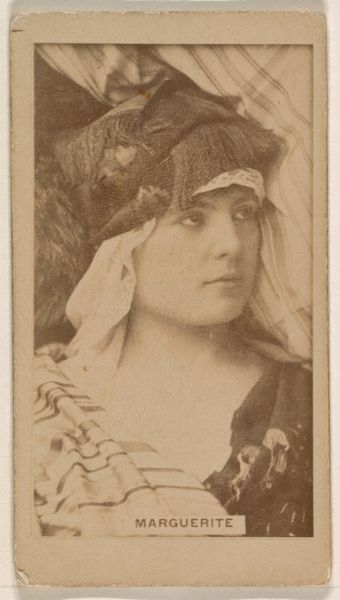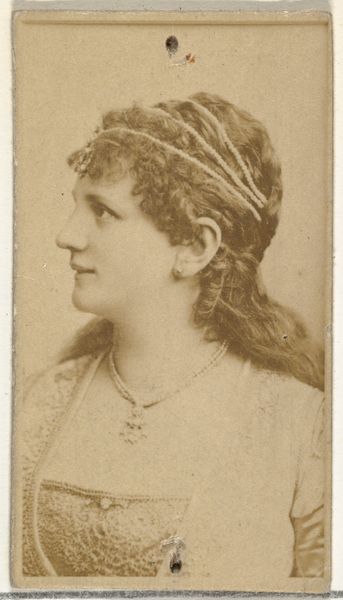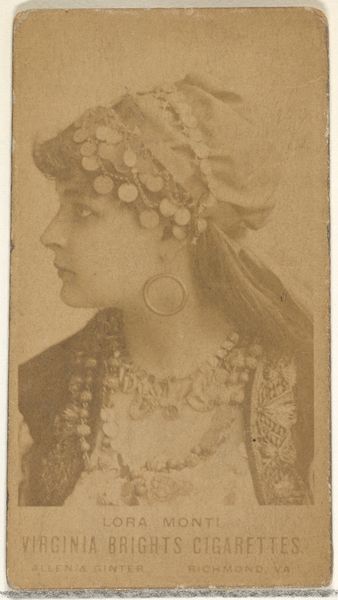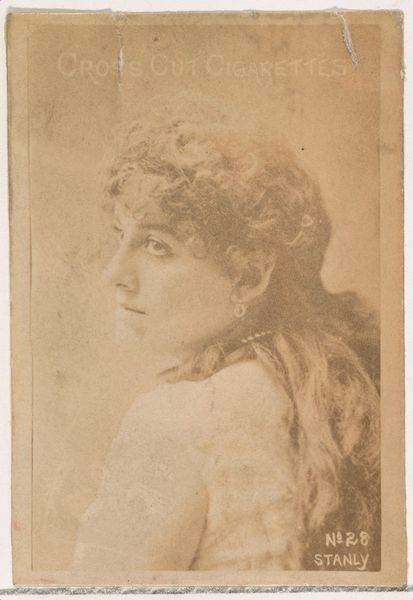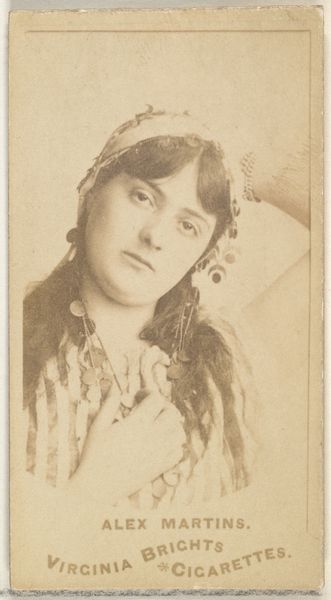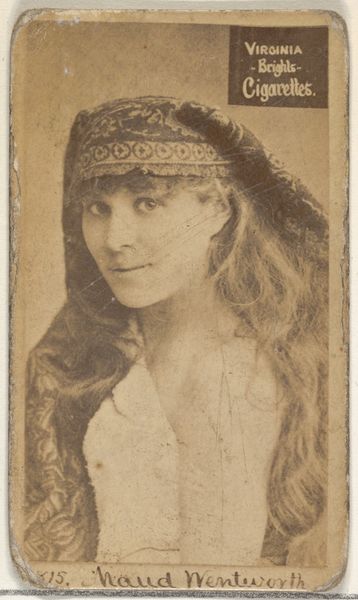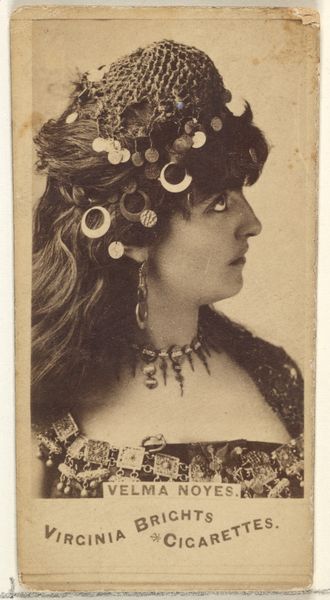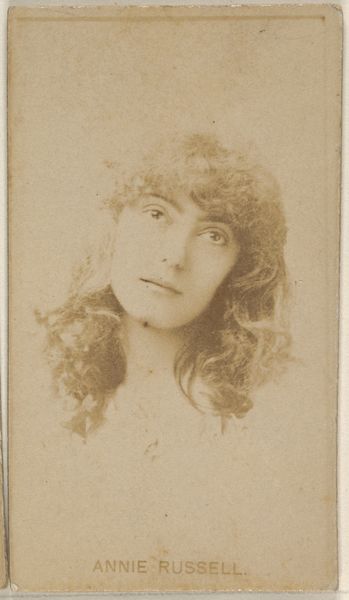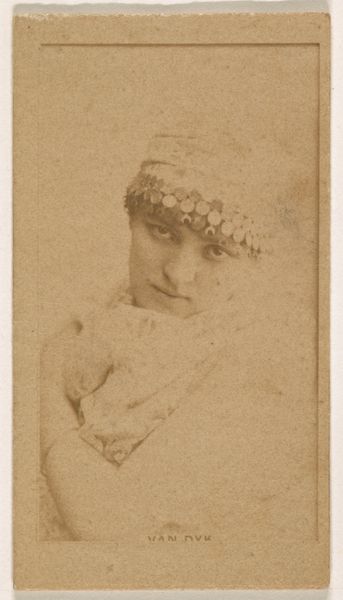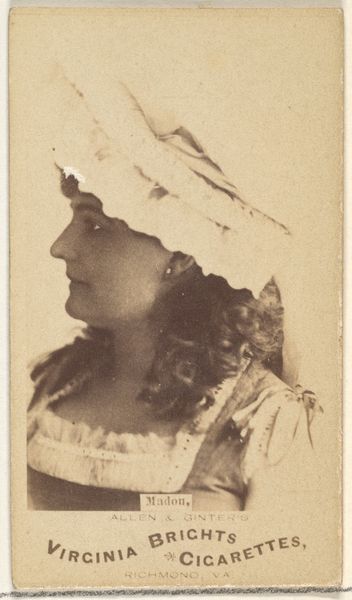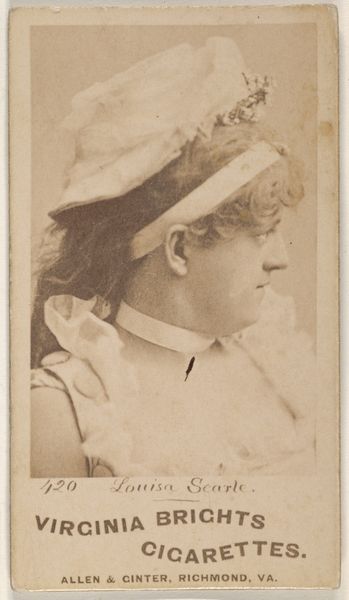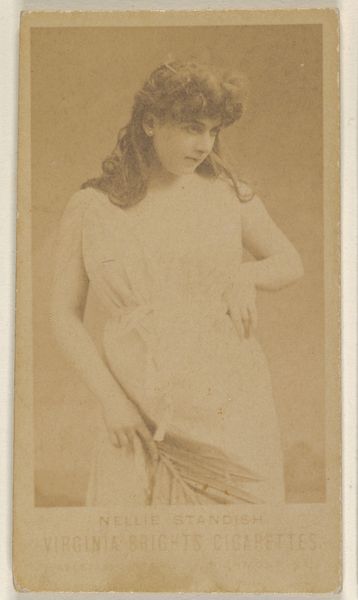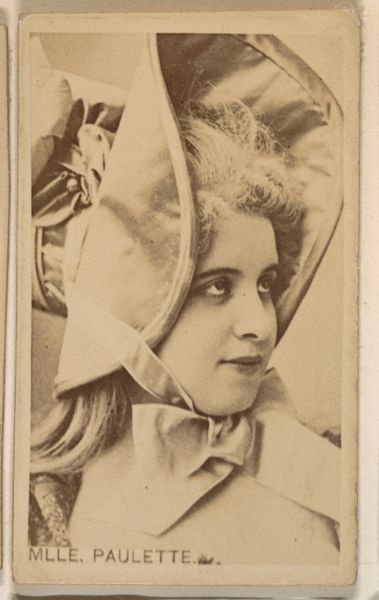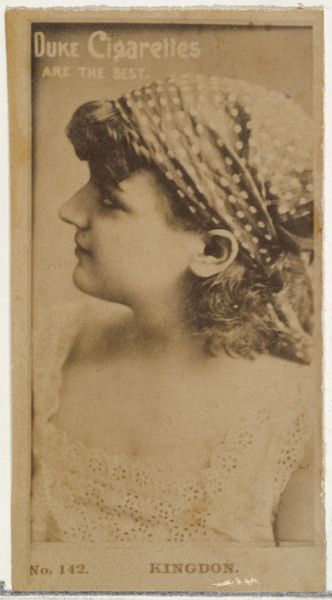
Julia Arthur, from the Actors and Actresses series (N145-8) issued by Duke Sons & Co. to promote Duke Cigarettes 1890 - 1895
0:00
0:00
drawing, print, photography
#
portrait
#
drawing
# print
#
charcoal drawing
#
photography
#
coloured pencil
Dimensions: Sheet: 2 11/16 × 1 3/8 in. (6.8 × 3.5 cm)
Copyright: Public Domain
Editor: This is a print called "Julia Arthur," part of the Actors and Actresses series by W. Duke, Sons & Co., dating back to somewhere between 1890 and 1895. It's captivating; the delicate lines and the subject’s profile create an air of serenity. What do you see when you look at this image? Curator: It immediately strikes me how much this image participates in the visual language of its time. This portrait isn't just about Julia Arthur, the individual; it uses her image to participate in a larger story of beauty and performance, especially in how she's styled. Notice the headscarf and tassels—what do those conjure for you? Editor: They give off an almost exotic, vaguely "orientalist" vibe, I guess? Curator: Precisely! That "orientalism" was a powerful symbol. It signified sophistication, worldliness, and a touch of the theatrical, perfect for selling cigarettes by associating them with allure and escape. The visual language here uses exoticism to create aspirational fantasies. How does this association with theatre change your understanding of it? Editor: I hadn't considered that aspect before. It seems like the image isn’t really about her true identity, but about the roles she embodies on and off stage, feeding into this constructed persona for the public. It feels very deliberate. Curator: Exactly. Cigarette cards like these participated in constructing celebrity image in a way that had broader symbolic meaning within society. Even a small print like this reveals the power of images in shaping desires and cultural narratives. Editor: It's amazing how much meaning can be packed into such a small and seemingly simple portrait. Thank you. Curator: My pleasure! I hope you keep digging deeper into how imagery tells stories, perpetuates memory, and helps forge our understanding of culture.
Comments
No comments
Be the first to comment and join the conversation on the ultimate creative platform.
